Unit 8 It must belong to Carla Section B(2a-Self Check) 原创教学课件(共39张PPT)
文档属性
| 名称 | Unit 8 It must belong to Carla Section B(2a-Self Check) 原创教学课件(共39张PPT) | 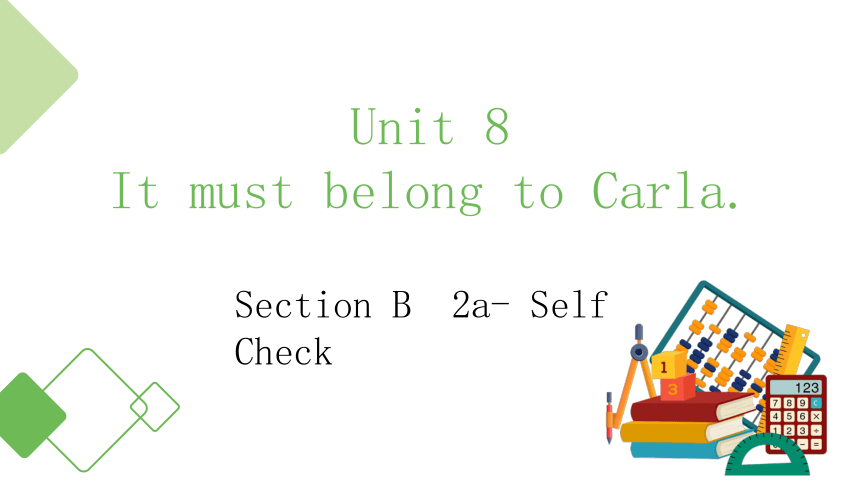 | |
| 格式 | pptx | ||
| 文件大小 | 9.7MB | ||
| 资源类型 | 试卷 | ||
| 版本资源 | 人教新目标(Go for it)版 | ||
| 科目 | 英语 | ||
| 更新时间 | 2022-10-18 21:53:04 | ||
图片预览

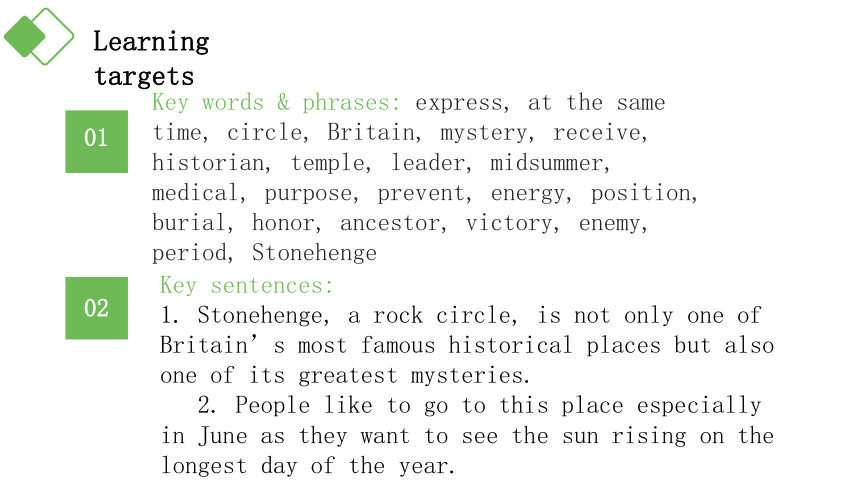
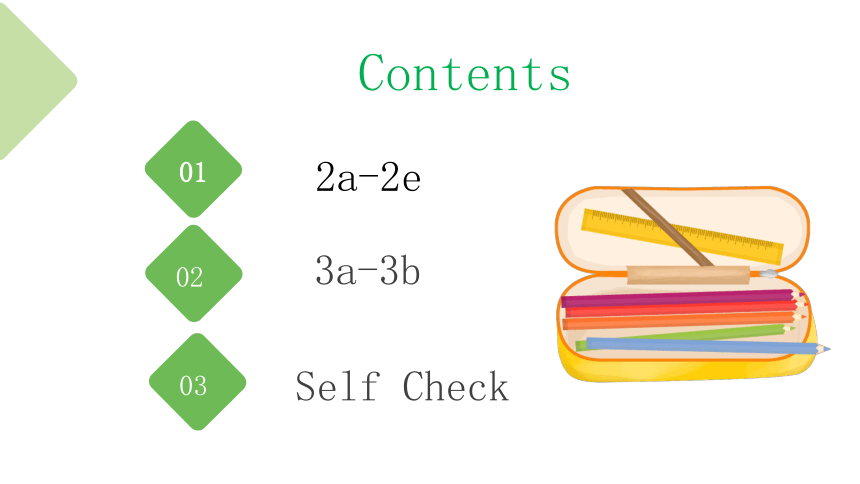
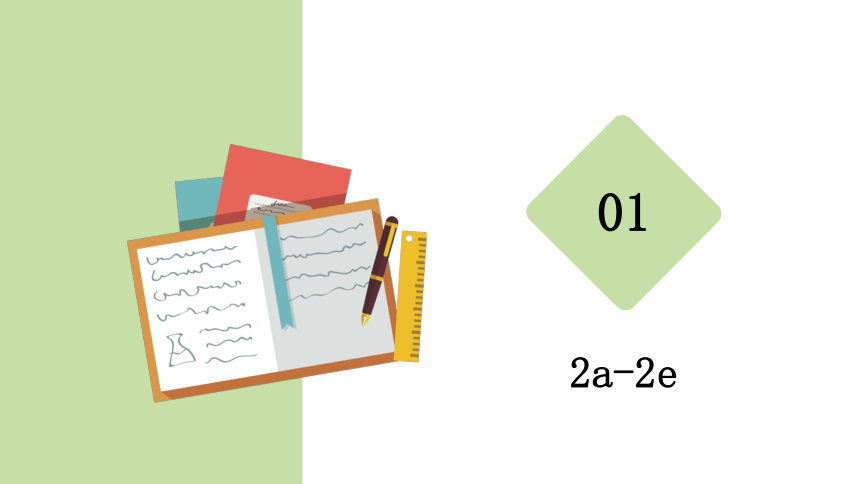
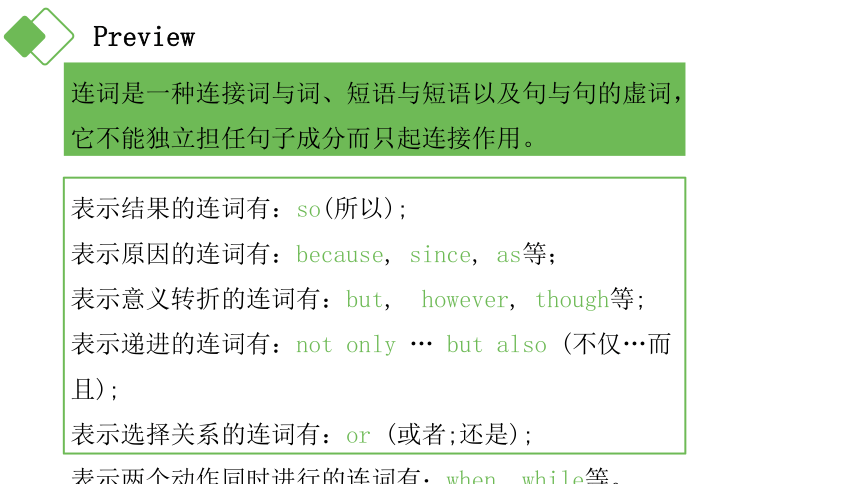
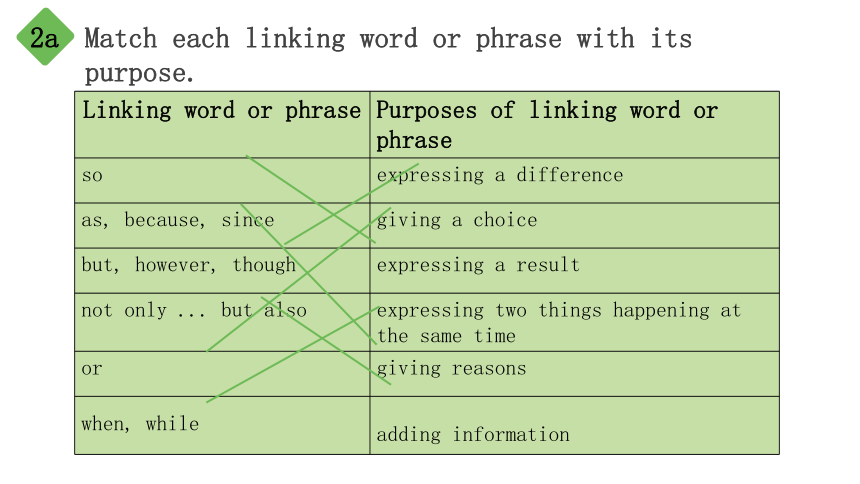
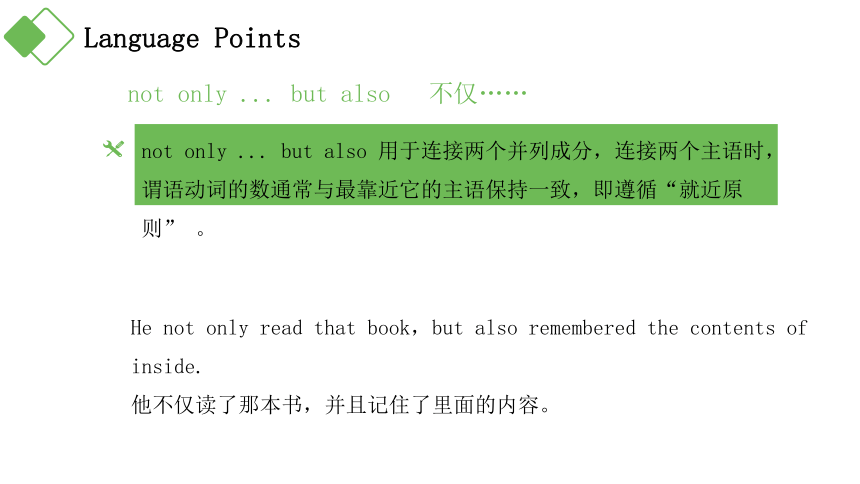
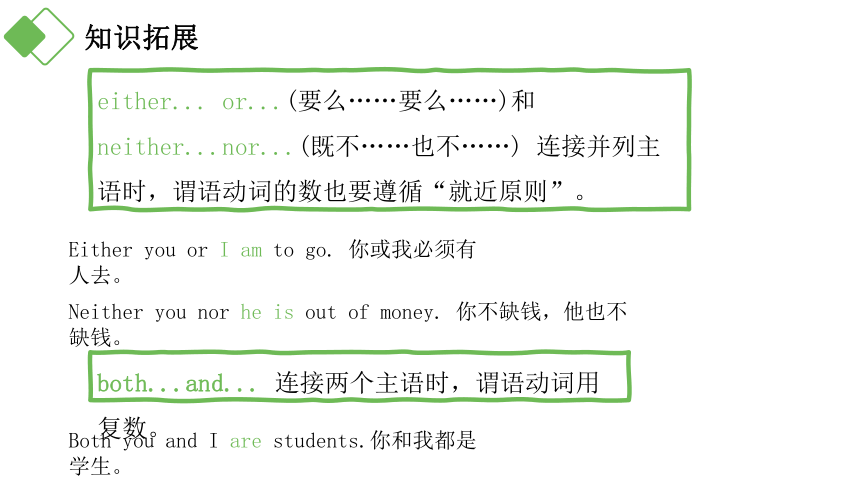
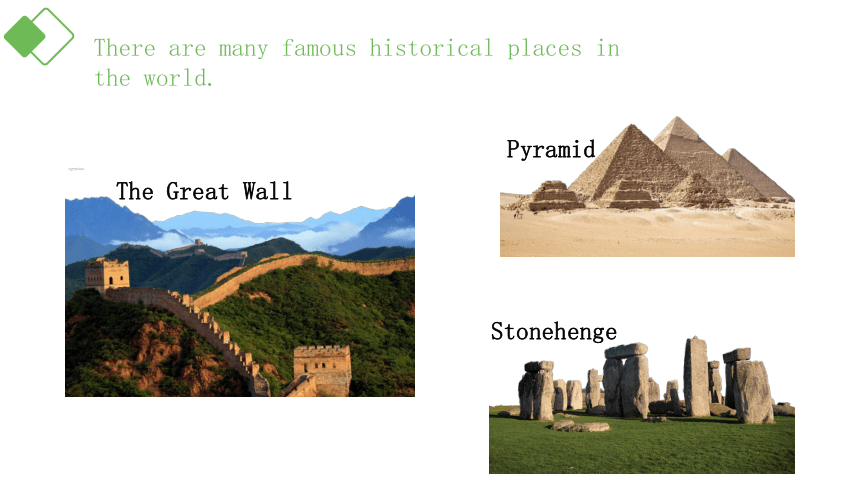
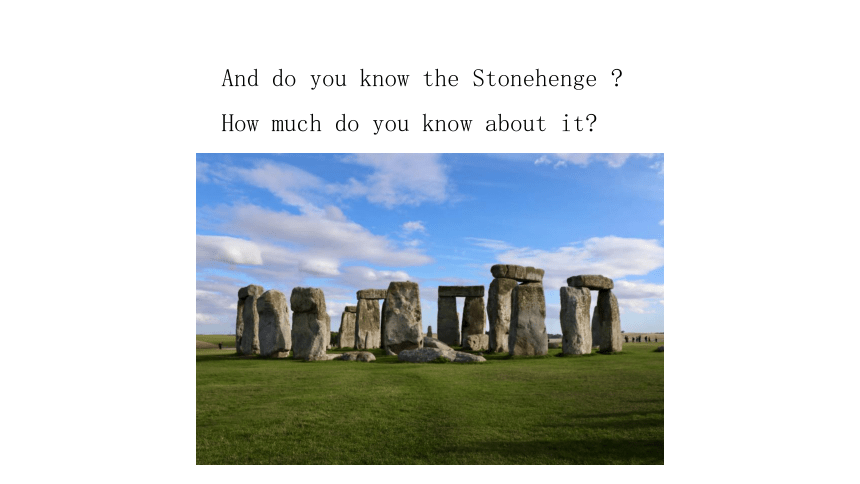
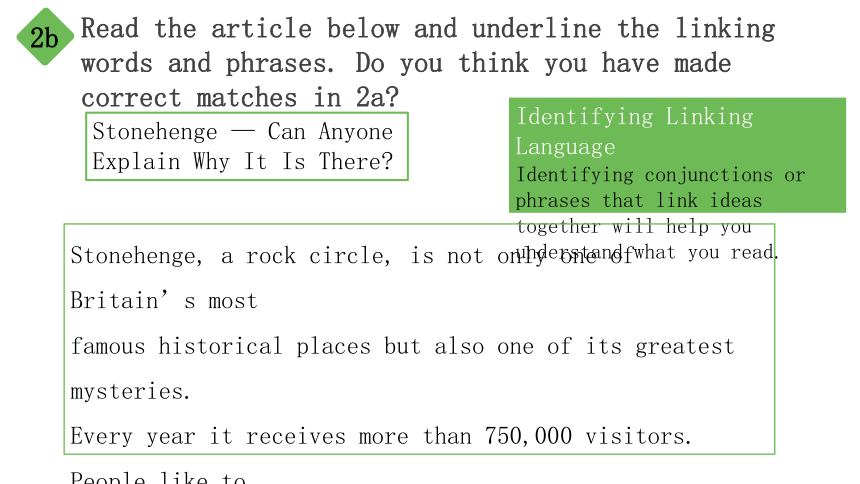
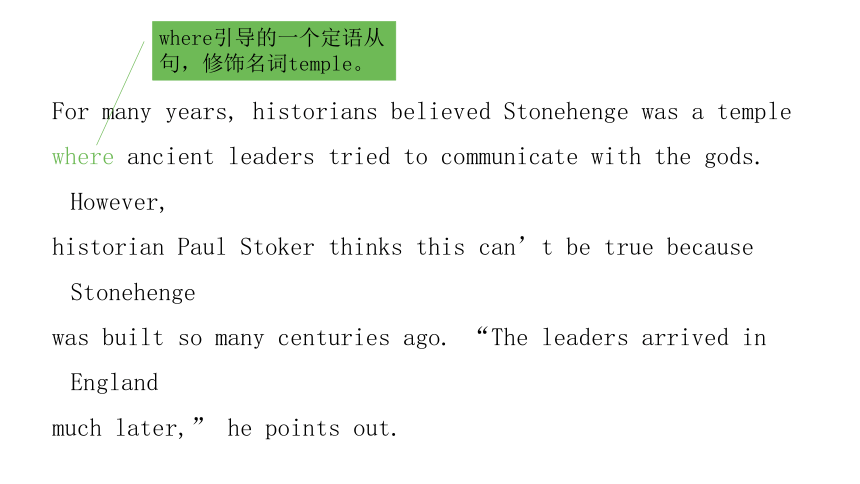
文档简介
(共39张PPT)
Unit 8
It must belong to Carla.
Section B 2a- Self Check
Key sentences:
1. Stonehenge, a rock circle, is not only one of Britain’s most famous historical places but also one of its greatest mysteries.
2. People like to go to this place especially in June as they want to see the sun rising on the longest day of the year.
Key words & phrases: express, at the same time, circle, Britain, mystery, receive, historian, temple, leader, midsummer, medical, purpose, prevent, energy, position, burial, honor, ancestor, victory, enemy, period, Stonehenge
Learning targets
01
02
2a-2e
01
3a-3b
02
Contents
Self Check
03
01
2a-2e
Preview
连词是一种连接词与词、短语与短语以及句与句的虚词, 它不能独立担任句子成分而只起连接作用。
表示结果的连词有:so(所以);
表示原因的连词有:because, since, as等;
表示意义转折的连词有:but, however, though等;
表示递进的连词有:not only … but also (不仅…而且);
表示选择关系的连词有:or (或者;还是);
表示两个动作同时进行的连词有:when, while等。
Match each linking word or phrase with its purpose.
2a
Linking word or phrase Purposes of linking word or phrase
so expressing a difference
as, because, since giving a choice
but, however, though expressing a result
not only ... but also expressing two things happening at the same time
or giving reasons
when, while adding information
Language Points
not only ... but also 不仅…… 而且
not only ... but also 用于连接两个并列成分,连接两个主语时,谓语动词的数通常与最靠近它的主语保持一致,即遵循“就近原则” 。
He not only read that book,but also remembered the contents of inside.
他不仅读了那本书,并且记住了里面的内容。
知识拓展
both...and... 连接两个主语时,谓语动词用复数。
either... or...(要么……要么……)和neither...nor...(既不……也不……) 连接并列主语时,谓语动词的数也要遵循“就近原则”。
Either you or I am to go. 你或我必须有人去。
Neither you nor he is out of money. 你不缺钱,他也不缺钱。
Both you and I are students.你和我都是学生。
There are many famous historical places in the world.
The Great Wall
Pyramid
Stonehenge
And do you know the Stonehenge How much do you know about it
Read the article below and underline the linking words and phrases. Do you think you have made correct matches in 2a
2b
Identifying Linking Language
Identifying conjunctions or phrases that link ideas together will help you understand what you read.
Stonehenge — Can Anyone Explain Why It Is There
Stonehenge, a rock circle, is not only one of Britain’s most
famous historical places but also one of its greatest mysteries.
Every year it receives more than 750,000 visitors. People like to
go to this place especially in June as they want to see the sun
rising on the longest day of the year.
For many years, historians believed Stonehenge was a temple
where ancient leaders tried to communicate with the gods. However,
historian Paul Stoker thinks this can’t be true because Stonehenge
was built so many centuries ago. “The leaders arrived in England
much later,” he points out.
where引导的一个定语从句,修饰名词temple。
Another popular idea is that Stonehenge might be a kind of calendar. The large stones
were put together in a certain way. On midsummer’s morning, the sun shines directly
into the center of the stones. Other people believe the stones have a medical purpose.
They think the stones can prevent illness and keep people healthy. “As you walk there,
you can feel the energy from your feet move up your body,” said one visitor. No one
is sure what Stonehenge was used for, but most agree that the position of the stones
must be for a special purpose. Some think it might be a burial place or a place to honor
ancestors. Others think it was built to celebrate a victory over an enemy.
一种
被用来做
……的位置
Stonehenge was built slowly over a long period of time. Most historians believe it must be almost 5,000 years old. One of the greatest mysteries is how it was built because the stones are so big and heavy. In 2001, a group of English volunteers tried to build another Stonehenge, but they couldn’t. “We don’t really know who
built Stonehenge,” says Paul Stoker. “And perhaps we might never know, but we do know they must have been hard working — and great planners!”
一群……
最大的谜之一
艰难的工作
work hard努力工作
Language points
1. Stonehenge, a rock circle, is not only one of Britain’s most famous historical places but also one of its greatest mysteries.
circle n. 圆圈 / v. 圈出;盘旋
He drew a circle by hand on the sand.
他用手在沙子上画了一个圆圈。
Please circle the words that you don’t understand.
请圈出你不理解的单词。
2. Every year it receives more than 750,000 visitors.
receive v. 接待;收到;接受
Receive v.收到;指客观上收到(信件、礼物、赠品等),不涉及收到者是否愿意接受。本身有一定的被动性。
accept v.接受;指收到者经过考虑而愿意接受,通常指主观上的接受,常与表示邀请或建议的句型连用。
You'll receive samples of paint, curtains and upholstery.
您将收到涂料、窗帘和椅套的样品。
It's a lovely ring, but I can't accept it.
这是一枚很可爱的戒指,但我不能收。
reach
get to
后接地点名词,多用于口语。
arrive
3. 辨析arrive, reach与get to
是及物动词,直接接表示地点的名词。
后接表示地点的名词时,需接介词in或at。其中arrive in后接大地方,如国家、城市等;arrive at后接小地方,如学校、车站等。
When did you arrive in Beijing = When did you reach Beijing = When did you get to Beijing
你什么时候到的北京?
4. “The leaders arrived in England much later,” he points out.
point out 指出;指明
Don’t point at the words while you are reading.
读书时不要用手指着字。
He points out that there are many ways to solve the problem.
他指出,有很多方法可以解决这个问题。
He pointed to the house on the other side of the river and said, “That’s my home.”
他指向河对岸的房子说:“那是我家。”
辨析:point to与point at
point to 指向离说话人较远的人或事物,意为“指向”。
point at 指向离说话人较近的人或事物,意为“指着”。
He points out that there are many ways to solve the problem.
他指出,有很多方法可以解决这个问题。
Don’t point at the words while you are reading.
读书时不要用手指着字。
prevent v. 阻止; 阻挠
5. They think the stones can prevent illness and keep people healthy.
We must do something to prevent the disease from spreading.
我们必须采取措施来阻止疾病的传播。
在prevent / stop sb. from doing sth.这个结构中,from可以省略,但在被动语态中不能省略。而在keep sb. from doing sth.中,from在任何时候都是不能省略的。
We were prevented from entering the building.
我们被阻止进入楼房。
Read the article again and complete the chart.
2c
Mysteries about Stonehenge What Stonehenge might have been used for…
Who built it
1. as a temple where ancient leaders tried to communicate with the gods.
2. a kind of calendar
3. have a medical purpose
4. might be a burial place or a
place to honor ancestors
5. celebrate a victory over an enemy
What was it used for
How was it built
When was it built
Complete the sentences with the correct linking words.
2d
1. Midsummer day is in June _____ a lot of people go to Stonehenge during this month.
2. The sun shines straight into the center of Stonehenge _______ the stones were put in a special position.
3. Some people think the rocks can _________ stop people from becoming ill _________ keep them healthy.
4. We don’t know who built Stonehenge _____ how it was built.
5. Historians think Stonehenge was built about 5,000 years ago; _____________, they are not sure.
and
as
not only
but also
and
however
Complete the sentences in 2d using different linking words.
1. A lot of people go to Stonehenge, during June ________
midsummer’s day is in this month.
2. The stones were put in a special position ________ the sun shines
straight into the center of Stonehenge.
3. Some people think the rocks can stop people from becoming ill
______ keeping them healthy.
4. ________ historians are not sure, they still believe that Stonehenge
was built about 5,000 tears ago.
because
while
Though
so
Pair work
Can you think of any other mysteries, either in China or another part of the world, that are similar to Stonehenge What do you know about these mysteries What is mysterious about them Discuss them with your group.
Bronze Standing Figure
This bronze standing figure is from Sanxingdui museum. It was made in Shang dynasty, which was more than 3,000 years from today. Till now, historians still don’t know why the bronze man’s hands are in the shape of circle. Who he was What was in his hands These are the mysteries that still need to be explored.
The Moai of Easter Island
Located in southeastern Pacific Ocean, the Easter Island is famous for its carved stone statues, called moai. A completed moai is made of three parts: a large yellow body, a red hat and white inset eyes with a coral iris(镶有珊瑚虹膜的白色眼睛). It is still a mystery that how the Moai of Easter Island were made and moved.
02
3a-3b
Read through the article in 3a on page 59 again. What do you think the noises could be List all your ideas. See who in your group can come up with the most imaginative explanation.
3a
What could the noises be Why do you think so
Someone could be playing tricks on people.
The noise could be two cats fights.
...
He might just want to scare people.
The woman something running away.
...
Look at this newspaper headline and finish the article about the strange happenings.
3b
Last week, in a quiet neighborhood, something
strange happened ...
We know that was happening in the neigborhood ...
Now the mystery is solved.
People in the neighborhood ...
No More Mystery in the Neighborhood
Writing tips
First part: background information about the mystery
Second part: how the mystery was solved
Third part: how the people in the neighborhood now feel
writing
No More Mystery in the Neighborhood
Last week, in a quiet neighborhood, something strange happened. Residents heard noises in the night but no one knew why. Victor Smith thought that it was teenagers having fun while Mrs. Smith and their neighbor, Helen Jones, blamed it on animals.
We now know what was happening in the neighborhood. A ranger’s station is being built in the nearby forest.
Trees had to be cut down to make space for the station. This affected some animals living in the forest. A raccoon family lost their home and had problems finding food. The raccoons discovered food in the neighborhood’s garbage bins, so they came back every night.
Now the mystery is solved. People in the neighborhood feel sorry for the raccoons and they are trying to help them.
03
Self Check
Fill the blanks with must, might or can’t.
1
1. That bright light ________ be a UFO — there’s no such thing!
2. I’m still waiting for the bus, so I ___________ be a bit late for the party.
3. That sweater ________ be Carla’s. She’s the only one who wears
such colorful clothes.
4. Tony ________ want to go to the concert. He likes music, but I’m not sure of he
likes rock music.
5. The person you saw at the supermarket ________ be Susan. I just talked to her on
the phone, and she’s at work right now.
can’t
could / might
must
might
can’t
Look at the chart and write sentences for things below.
2
Name Likes Dislikes
Jessica take photos run
Todd play the piano eat sweet food
Mike play tennis watch movies
Annie read cook
DVD
2. bowl of ice-cream
3. camera ___________________________________________
4. cookbook _________________________________________
5. tennis ball _________________________________________
6. running shoes _______________________________________
It can’t be Mike’s. He doesn’t like to watch movies.
It can’t be Todd’s. He doesn’t eat sweet food.
It must be Jessica’s. She likes taking photos.
It can’t be Annie’s. She doesn’t like to cook.
It must be Mike’s. He likes to play tennis.
It can’t be Jessica’s. She doesn’t like to run.
1. — Excuse me. Is this the right way to the Summer Palace
— Sorry, I am not sure. It ______ be.
A. might B. will C. must D. can
2. — Isn’t that Ann’s husband over there
— No, it ______ be him — I’m sure he doesn’t wear glasses.
A. can’t B. must not C. won’t D. may not
Exercise
一、单项选择。
3. I don’t know him. He ______ a new comer.
A. must be B. may C. can be D. might
4. Mary ______ be in Paris. I saw her in town only few minutes ago.
A. mustn’t B. shouldn’t C. can’t D. may not
二、用must, might / could, can’t填空。
Whose earrings are these They _____ be Mary’s. She never wears earrings.
The telephone is ringing, but nobody answers it. He _______________ be out.
This book _____ be hers; her name is on it.
4. This is a hair band, so it ______ be Tom’s.
5. My father______ be at home now; he has gone to Shanghai.
can’t
might / could
must
can’t
can’t
Homework
1. Preview 1a — 1c in Unit 9.
2. Do the exercises in students’ book.
Next
Unit 9
I like music that I can dance to.
Section A 1a-2d
Unit 8
It must belong to Carla.
Section B 2a- Self Check
Key sentences:
1. Stonehenge, a rock circle, is not only one of Britain’s most famous historical places but also one of its greatest mysteries.
2. People like to go to this place especially in June as they want to see the sun rising on the longest day of the year.
Key words & phrases: express, at the same time, circle, Britain, mystery, receive, historian, temple, leader, midsummer, medical, purpose, prevent, energy, position, burial, honor, ancestor, victory, enemy, period, Stonehenge
Learning targets
01
02
2a-2e
01
3a-3b
02
Contents
Self Check
03
01
2a-2e
Preview
连词是一种连接词与词、短语与短语以及句与句的虚词, 它不能独立担任句子成分而只起连接作用。
表示结果的连词有:so(所以);
表示原因的连词有:because, since, as等;
表示意义转折的连词有:but, however, though等;
表示递进的连词有:not only … but also (不仅…而且);
表示选择关系的连词有:or (或者;还是);
表示两个动作同时进行的连词有:when, while等。
Match each linking word or phrase with its purpose.
2a
Linking word or phrase Purposes of linking word or phrase
so expressing a difference
as, because, since giving a choice
but, however, though expressing a result
not only ... but also expressing two things happening at the same time
or giving reasons
when, while adding information
Language Points
not only ... but also 不仅…… 而且
not only ... but also 用于连接两个并列成分,连接两个主语时,谓语动词的数通常与最靠近它的主语保持一致,即遵循“就近原则” 。
He not only read that book,but also remembered the contents of inside.
他不仅读了那本书,并且记住了里面的内容。
知识拓展
both...and... 连接两个主语时,谓语动词用复数。
either... or...(要么……要么……)和neither...nor...(既不……也不……) 连接并列主语时,谓语动词的数也要遵循“就近原则”。
Either you or I am to go. 你或我必须有人去。
Neither you nor he is out of money. 你不缺钱,他也不缺钱。
Both you and I are students.你和我都是学生。
There are many famous historical places in the world.
The Great Wall
Pyramid
Stonehenge
And do you know the Stonehenge How much do you know about it
Read the article below and underline the linking words and phrases. Do you think you have made correct matches in 2a
2b
Identifying Linking Language
Identifying conjunctions or phrases that link ideas together will help you understand what you read.
Stonehenge — Can Anyone Explain Why It Is There
Stonehenge, a rock circle, is not only one of Britain’s most
famous historical places but also one of its greatest mysteries.
Every year it receives more than 750,000 visitors. People like to
go to this place especially in June as they want to see the sun
rising on the longest day of the year.
For many years, historians believed Stonehenge was a temple
where ancient leaders tried to communicate with the gods. However,
historian Paul Stoker thinks this can’t be true because Stonehenge
was built so many centuries ago. “The leaders arrived in England
much later,” he points out.
where引导的一个定语从句,修饰名词temple。
Another popular idea is that Stonehenge might be a kind of calendar. The large stones
were put together in a certain way. On midsummer’s morning, the sun shines directly
into the center of the stones. Other people believe the stones have a medical purpose.
They think the stones can prevent illness and keep people healthy. “As you walk there,
you can feel the energy from your feet move up your body,” said one visitor. No one
is sure what Stonehenge was used for, but most agree that the position of the stones
must be for a special purpose. Some think it might be a burial place or a place to honor
ancestors. Others think it was built to celebrate a victory over an enemy.
一种
被用来做
……的位置
Stonehenge was built slowly over a long period of time. Most historians believe it must be almost 5,000 years old. One of the greatest mysteries is how it was built because the stones are so big and heavy. In 2001, a group of English volunteers tried to build another Stonehenge, but they couldn’t. “We don’t really know who
built Stonehenge,” says Paul Stoker. “And perhaps we might never know, but we do know they must have been hard working — and great planners!”
一群……
最大的谜之一
艰难的工作
work hard努力工作
Language points
1. Stonehenge, a rock circle, is not only one of Britain’s most famous historical places but also one of its greatest mysteries.
circle n. 圆圈 / v. 圈出;盘旋
He drew a circle by hand on the sand.
他用手在沙子上画了一个圆圈。
Please circle the words that you don’t understand.
请圈出你不理解的单词。
2. Every year it receives more than 750,000 visitors.
receive v. 接待;收到;接受
Receive v.收到;指客观上收到(信件、礼物、赠品等),不涉及收到者是否愿意接受。本身有一定的被动性。
accept v.接受;指收到者经过考虑而愿意接受,通常指主观上的接受,常与表示邀请或建议的句型连用。
You'll receive samples of paint, curtains and upholstery.
您将收到涂料、窗帘和椅套的样品。
It's a lovely ring, but I can't accept it.
这是一枚很可爱的戒指,但我不能收。
reach
get to
后接地点名词,多用于口语。
arrive
3. 辨析arrive, reach与get to
是及物动词,直接接表示地点的名词。
后接表示地点的名词时,需接介词in或at。其中arrive in后接大地方,如国家、城市等;arrive at后接小地方,如学校、车站等。
When did you arrive in Beijing = When did you reach Beijing = When did you get to Beijing
你什么时候到的北京?
4. “The leaders arrived in England much later,” he points out.
point out 指出;指明
Don’t point at the words while you are reading.
读书时不要用手指着字。
He points out that there are many ways to solve the problem.
他指出,有很多方法可以解决这个问题。
He pointed to the house on the other side of the river and said, “That’s my home.”
他指向河对岸的房子说:“那是我家。”
辨析:point to与point at
point to 指向离说话人较远的人或事物,意为“指向”。
point at 指向离说话人较近的人或事物,意为“指着”。
He points out that there are many ways to solve the problem.
他指出,有很多方法可以解决这个问题。
Don’t point at the words while you are reading.
读书时不要用手指着字。
prevent v. 阻止; 阻挠
5. They think the stones can prevent illness and keep people healthy.
We must do something to prevent the disease from spreading.
我们必须采取措施来阻止疾病的传播。
在prevent / stop sb. from doing sth.这个结构中,from可以省略,但在被动语态中不能省略。而在keep sb. from doing sth.中,from在任何时候都是不能省略的。
We were prevented from entering the building.
我们被阻止进入楼房。
Read the article again and complete the chart.
2c
Mysteries about Stonehenge What Stonehenge might have been used for…
Who built it
1. as a temple where ancient leaders tried to communicate with the gods.
2. a kind of calendar
3. have a medical purpose
4. might be a burial place or a
place to honor ancestors
5. celebrate a victory over an enemy
What was it used for
How was it built
When was it built
Complete the sentences with the correct linking words.
2d
1. Midsummer day is in June _____ a lot of people go to Stonehenge during this month.
2. The sun shines straight into the center of Stonehenge _______ the stones were put in a special position.
3. Some people think the rocks can _________ stop people from becoming ill _________ keep them healthy.
4. We don’t know who built Stonehenge _____ how it was built.
5. Historians think Stonehenge was built about 5,000 years ago; _____________, they are not sure.
and
as
not only
but also
and
however
Complete the sentences in 2d using different linking words.
1. A lot of people go to Stonehenge, during June ________
midsummer’s day is in this month.
2. The stones were put in a special position ________ the sun shines
straight into the center of Stonehenge.
3. Some people think the rocks can stop people from becoming ill
______ keeping them healthy.
4. ________ historians are not sure, they still believe that Stonehenge
was built about 5,000 tears ago.
because
while
Though
so
Pair work
Can you think of any other mysteries, either in China or another part of the world, that are similar to Stonehenge What do you know about these mysteries What is mysterious about them Discuss them with your group.
Bronze Standing Figure
This bronze standing figure is from Sanxingdui museum. It was made in Shang dynasty, which was more than 3,000 years from today. Till now, historians still don’t know why the bronze man’s hands are in the shape of circle. Who he was What was in his hands These are the mysteries that still need to be explored.
The Moai of Easter Island
Located in southeastern Pacific Ocean, the Easter Island is famous for its carved stone statues, called moai. A completed moai is made of three parts: a large yellow body, a red hat and white inset eyes with a coral iris(镶有珊瑚虹膜的白色眼睛). It is still a mystery that how the Moai of Easter Island were made and moved.
02
3a-3b
Read through the article in 3a on page 59 again. What do you think the noises could be List all your ideas. See who in your group can come up with the most imaginative explanation.
3a
What could the noises be Why do you think so
Someone could be playing tricks on people.
The noise could be two cats fights.
...
He might just want to scare people.
The woman something running away.
...
Look at this newspaper headline and finish the article about the strange happenings.
3b
Last week, in a quiet neighborhood, something
strange happened ...
We know that was happening in the neigborhood ...
Now the mystery is solved.
People in the neighborhood ...
No More Mystery in the Neighborhood
Writing tips
First part: background information about the mystery
Second part: how the mystery was solved
Third part: how the people in the neighborhood now feel
writing
No More Mystery in the Neighborhood
Last week, in a quiet neighborhood, something strange happened. Residents heard noises in the night but no one knew why. Victor Smith thought that it was teenagers having fun while Mrs. Smith and their neighbor, Helen Jones, blamed it on animals.
We now know what was happening in the neighborhood. A ranger’s station is being built in the nearby forest.
Trees had to be cut down to make space for the station. This affected some animals living in the forest. A raccoon family lost their home and had problems finding food. The raccoons discovered food in the neighborhood’s garbage bins, so they came back every night.
Now the mystery is solved. People in the neighborhood feel sorry for the raccoons and they are trying to help them.
03
Self Check
Fill the blanks with must, might or can’t.
1
1. That bright light ________ be a UFO — there’s no such thing!
2. I’m still waiting for the bus, so I ___________ be a bit late for the party.
3. That sweater ________ be Carla’s. She’s the only one who wears
such colorful clothes.
4. Tony ________ want to go to the concert. He likes music, but I’m not sure of he
likes rock music.
5. The person you saw at the supermarket ________ be Susan. I just talked to her on
the phone, and she’s at work right now.
can’t
could / might
must
might
can’t
Look at the chart and write sentences for things below.
2
Name Likes Dislikes
Jessica take photos run
Todd play the piano eat sweet food
Mike play tennis watch movies
Annie read cook
DVD
2. bowl of ice-cream
3. camera ___________________________________________
4. cookbook _________________________________________
5. tennis ball _________________________________________
6. running shoes _______________________________________
It can’t be Mike’s. He doesn’t like to watch movies.
It can’t be Todd’s. He doesn’t eat sweet food.
It must be Jessica’s. She likes taking photos.
It can’t be Annie’s. She doesn’t like to cook.
It must be Mike’s. He likes to play tennis.
It can’t be Jessica’s. She doesn’t like to run.
1. — Excuse me. Is this the right way to the Summer Palace
— Sorry, I am not sure. It ______ be.
A. might B. will C. must D. can
2. — Isn’t that Ann’s husband over there
— No, it ______ be him — I’m sure he doesn’t wear glasses.
A. can’t B. must not C. won’t D. may not
Exercise
一、单项选择。
3. I don’t know him. He ______ a new comer.
A. must be B. may C. can be D. might
4. Mary ______ be in Paris. I saw her in town only few minutes ago.
A. mustn’t B. shouldn’t C. can’t D. may not
二、用must, might / could, can’t填空。
Whose earrings are these They _____ be Mary’s. She never wears earrings.
The telephone is ringing, but nobody answers it. He _______________ be out.
This book _____ be hers; her name is on it.
4. This is a hair band, so it ______ be Tom’s.
5. My father______ be at home now; he has gone to Shanghai.
can’t
might / could
must
can’t
can’t
Homework
1. Preview 1a — 1c in Unit 9.
2. Do the exercises in students’ book.
Next
Unit 9
I like music that I can dance to.
Section A 1a-2d
同课章节目录
- Unit 1 How can we become good learners.
- Section A
- Section B
- Unit 2 I think that mooncakes are delicious!
- Section A
- Section B
- Unit 3 Could you please tell me where the restroom
- Section A
- Section B
- Unit 4 I used to be afraid of the dark.
- Section A
- Section B
- Unit 5 What are the shirts made of?
- Section A
- Section B
- Review of Units 1-5
- Unit 6 When was it invented?
- Section A
- Section B
- Unit 7 Teenagers should be allowed to choose their
- Section A
- Section B
- Unit 8 It must belong to Carla.
- Section A
- Section B
- Unit 9 I like music that I can dance to.
- Section A
- Section B
- Unit 10 You're supposed to shake hands.
- Section A
- Section B
- Review of Units 6-10
- Unit 11 Sad movies make me cry.
- Section A
- Section B
- Unit 12 Life is full of the unexpected
- Section A
- Section B
- Unit 13 We're trying to save the earth!
- Section A
- Section B
- Unit 14 I remember meeting all of you in Grade 7.
- Section A
- Section B
- Review of Units 11-14
